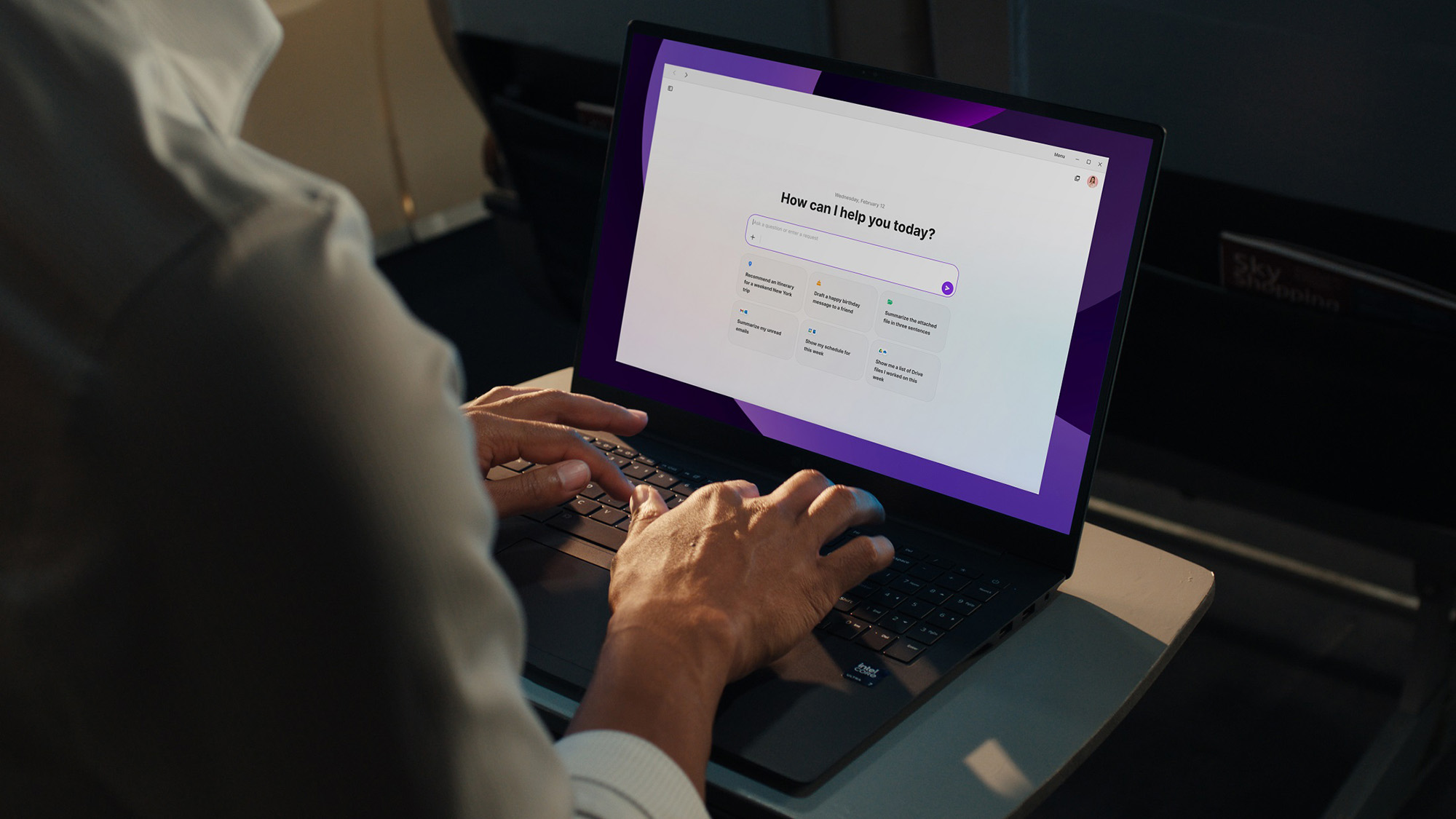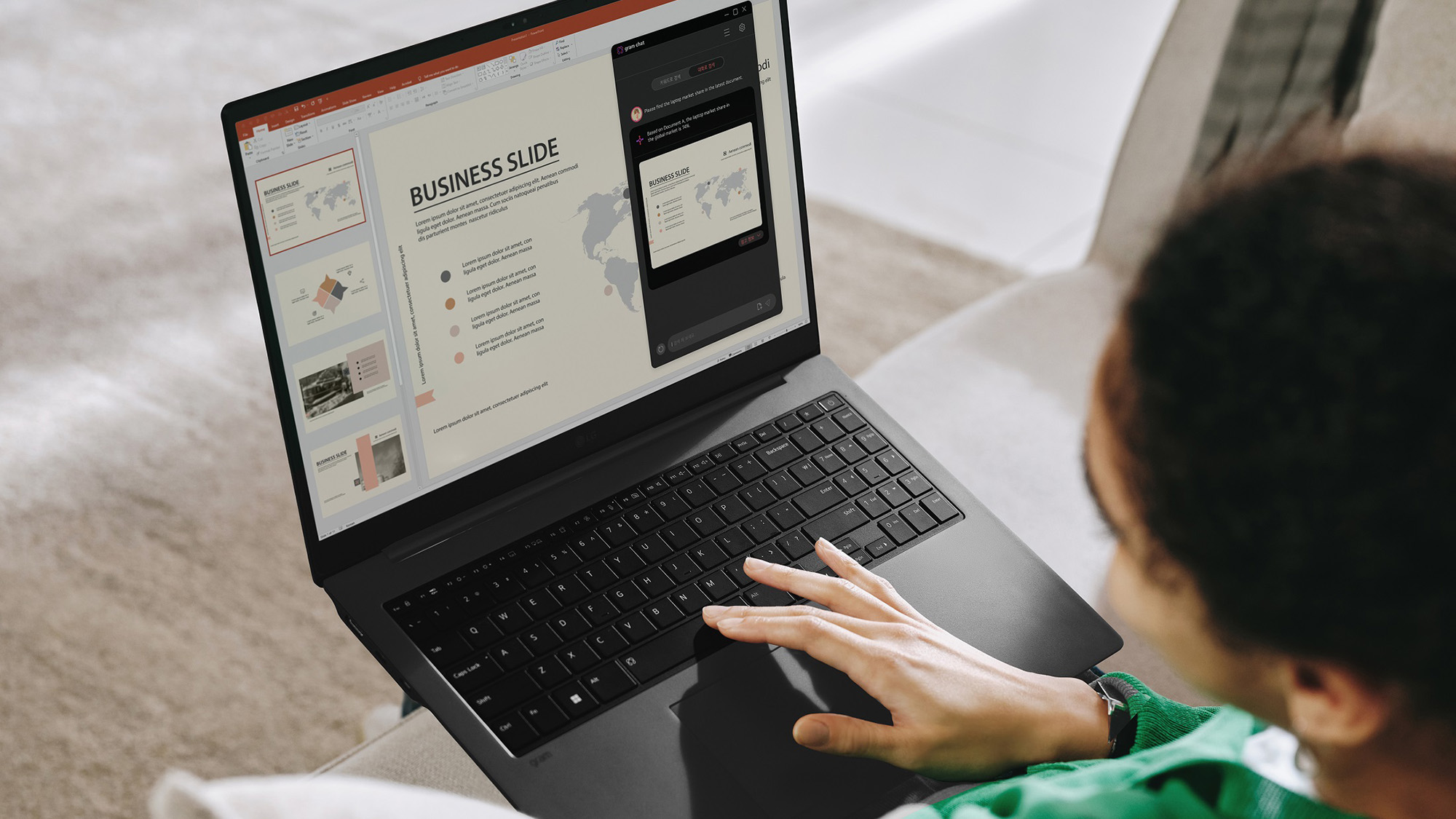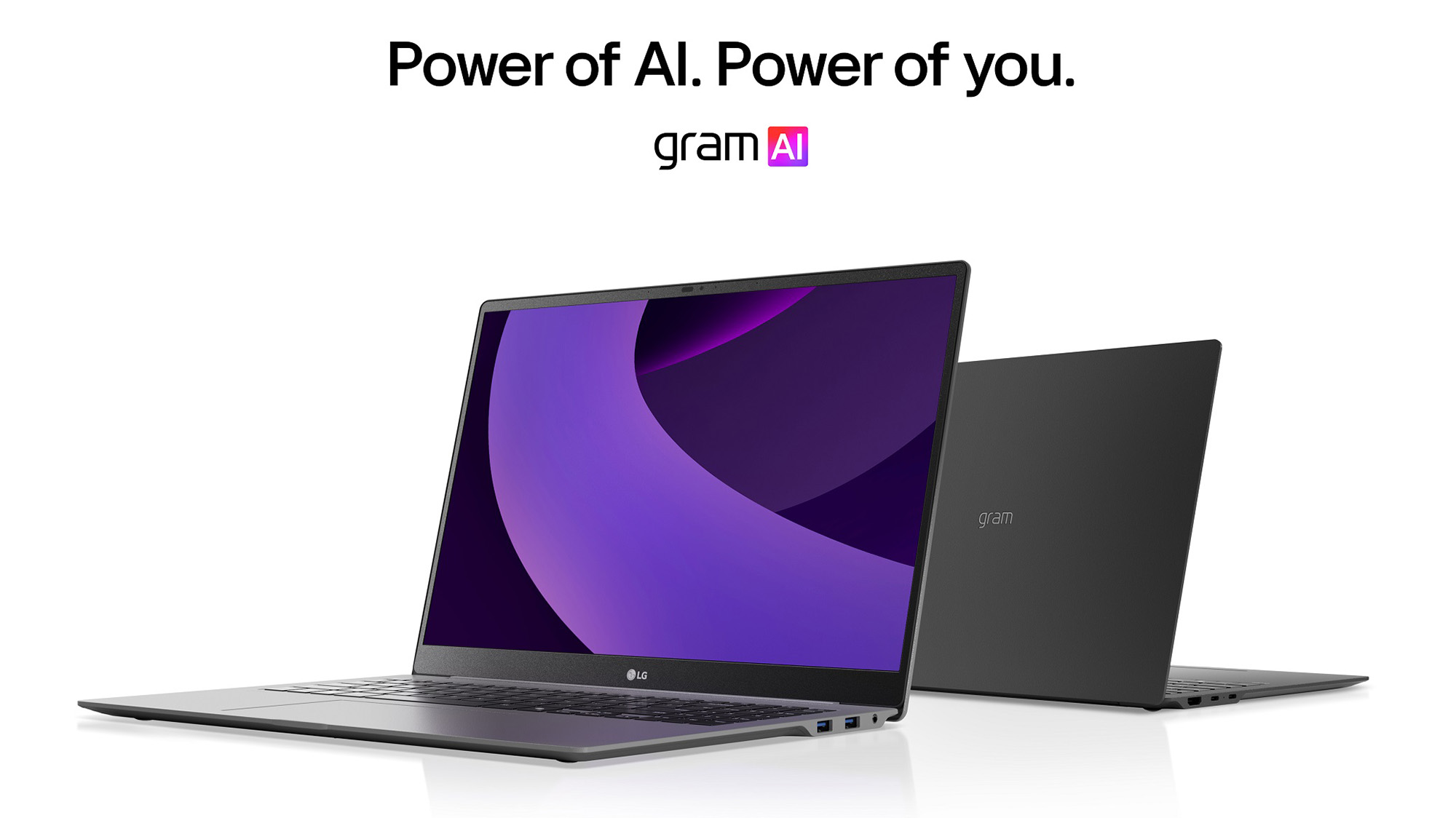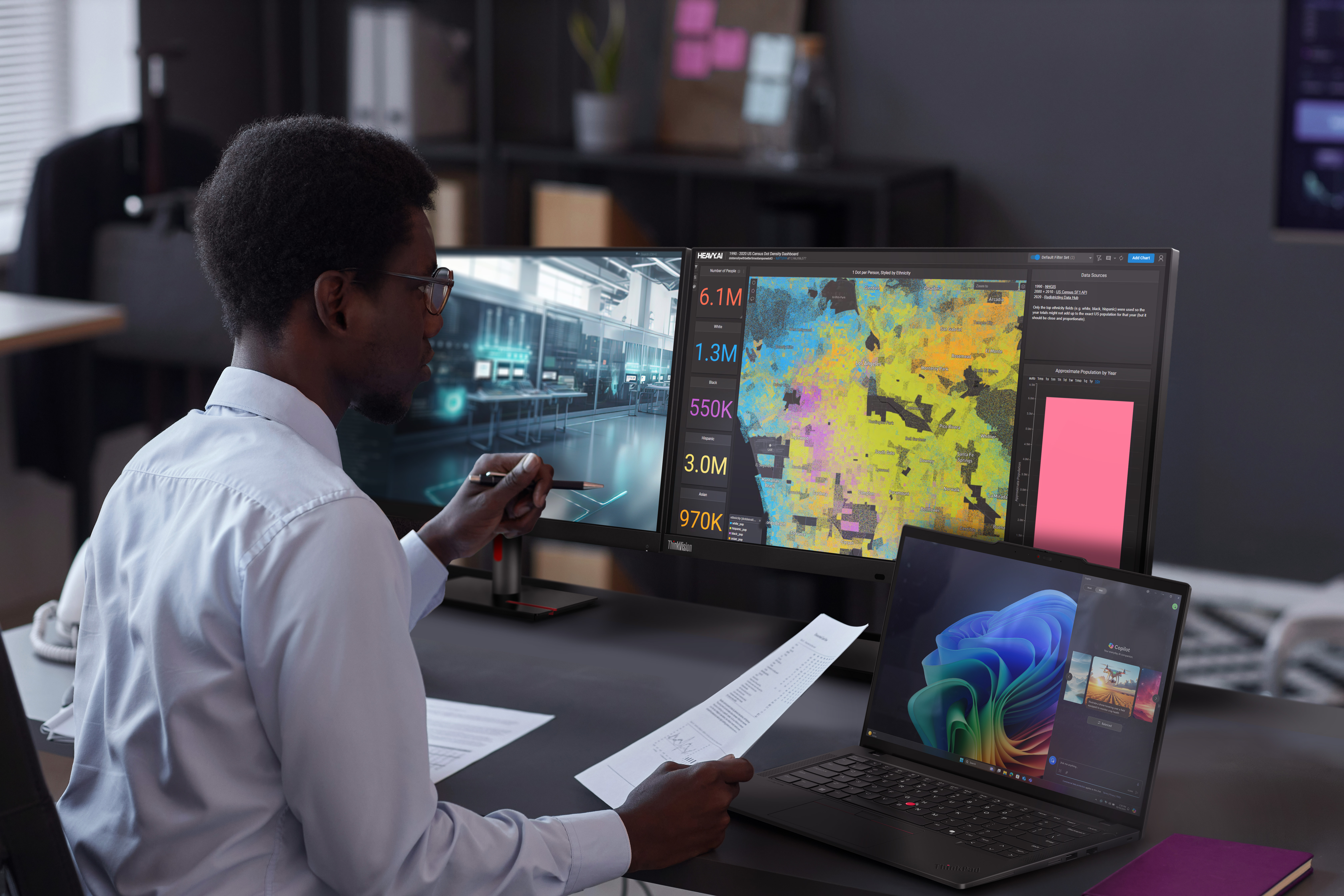LG's AI-heavy update to its Gram laptops sets the stage for what to expect at CES 2025
Will LG's on-device AI features convince you to upgrade in 2025?

On Monday, LG announced a trio of new gaming monitors that will debut at CES 2025, but it's not done with the early announcements as on Tuesday, it unveiled the 2025 LG Gram lineup.
I've reviewed a few LG Gram models for Laptop Mag in recent years, and while LG isn't the most prolific laptop manufacturer, its hit rate is outstanding. The LG Gram Pro 2-in-1 (2024) was among my favorites and earned a spot on several of our buying guides, including the best 2-in-1 laptops. LG consistently delivers thin-and-light laptops with solid performance and displays, and this year's lineup looks to continue that trend while also introducing one brand new model for 2025, the LG Gram Book.
LG is using a blend of Intel Core Ultra H-Series (Arrow Lake) and Intel Core Ultra V-Series (Lunar Lake) chips to power these laptops. As LG points out, the former leans into more traditional productivity performance, while the latter is more optimized for AI with slightly scaled-back productivity performance.
We'll be able to spend some time with these laptops at CES 2025, which runs from January 7-10, 2025, but here's what we know about LG's 2025 Gram laptops so far.
LG Gram Book
Let's lead things off with the one truly new model for this year, the LG Gram Book. While the company has delivered a number of excellent laptops in recent years, they decidedly fall into premium laptop pricing, the LG Gram Book is the company's attempt to bring a more affordable option to the U.S. market.
It features a 15.6-inch FHD (1,920 x 1080) LCD 60Hz display with a claimed 300 nits of brightness. At 3.74 pounds and 14.2 x 9.36 x 0.76 inches, it is also by far the thickest and heaviest member of the Gram series.
You have an Intel Core i5 CPU paired with Intel Xe graphics, and either 8 or 16GB of DDR4 RAM with a 256GB, 512GB, or 1TB NVMe SSD.
Get The Snapshot, our free newsletter on the future of computing
Sign up to receive The Snapshot, a free special dispatch from Laptop Mag, in your inbox.
The port selection is reasonable with a pair of USB 3.2 Gen 2, one USB 3.2 Gen 1, a single USB 2.0, and finally an HDMI 2.1 port.
For audio you have a pair of 1.5W speakers, and you get an HD (720p) webcam with a privacy shutter for your video meeting needs. The 51Wh battery is a bit disappointing to see, given the size of this laptop, so we'll have to see how that fares in testing.
The massive piece of the puzzle that we're missing here is the price of the LG Gram Book. Given the specs it needs to start well below $1,000 to be competitive in the market, but we'll have to wait and see.
LG Gram Pro 16 2-in-1
One of my favorite 2-in-1 laptops from last year gets a few upgrades for 2025, but doesn't reinvent the wheel.
For its 16-inch display you either have the option of a WQXGA+ (2,880 x 1,800) OLED or a WQXGA (2,560 x 1,600) LCD panel. The former delivers a variable refresh rate of 48-120Hz, while the latter goes from 31-144Hz. Both feature a claimed 400 nits of brightness.
I lavished considerable praise on the OLED panel in last year's Gram Pro 2-in-1, calling it "one of the best displays I've ever seen on a laptop..." so I'd certainly lean that way and hope LG just managed to maintain that high level of quality.
The LG Gram Pro 16 2-in-1 weighs a mere 3.08 pounds and measures 14.1 x 10 x 0.51 inches. It's remarkably thin-and-light for a 2-in-1 with a 16-inch display.
Inside, you get either an Intel Arrow Lake Core Ultra 5 or 7, Intel Arc Graphics, up to 32GB of LPDDR5X RAM with a 512GB, 1TB, or 2TB of Gen4 NVMe SSD.
Ports include: two USB 4 Gen 3 Type C, two USB 3.2 Gen 2, and HDMI 2.1.
The audio looks impressive on paper, as shown by a pair of 3W stereo speakers and a pair of 5W Smart AMPs. We'll have to see how that holds up in person, as last year's similar setup sounded good but not great due in part to the bottom-firing design. The 77Wh battery is impressive given the size and weight of this laptop, once we get it in our lab we'll see what that yields with the new Arrow Lake CPU.
Finally, the Gram Pro 2-in-1 features an FHD (1080p) webcam with an IR camera for Windows Hello support and a dual mic array.

LG Gram Pro (17-inch)
If you liked what you saw in the Gram Pro 2-in-1 but don't care about the flexible form factor, look no further than the LG Gram Pro (17-inch).
Unfortunately, it does drop the OLED display option of the Pro 2-in-1, but otherwise, it matches its specs almost exactly. I'll spare you running down the full list again and just note a couple of critical differences.
The first is naturally the size with its 17-inch display. It weighs in at 3.26 pounds (0.18 pounds heavier than the 16-inch 2-in-1), and it measures 14.9 x 10.4 x 0.62 inches.
That extra thickness may be partly due to its RTX 4050 GPU with 6GB of GDDR6 RAM. It also allows the Gram Pro (17-inch) to pack in a larger 90Wh battery; again, we'll see what that yields once we can get it in for testing.
Those are the only differences separating these models, again we don't have pricing yet, which may sway your decision as well.
LG Gram Pro (16-inch)
I saved the littlest Gram Pro for last, but the 16-inch Gram isn't to be forgotten. It shares several features with its other Pro siblings, so I'll highlight the differences.
The biggest shift is the Lunar Lake CPU options, making the LG Gram Pro (16-inch) the first Copilot+ PC in the Gram family. While LG's new Gram AI will work across the entire lineup, the Gram Pro (16-inch) should have the advantage given its more powerful NPU. The base model features an Intel Core Ultra 5, but you can upgrade to an Ultra 7 or 9. All configurations come with Intel Arc graphics.
With the exception of dropping to 16 inches, the Gram Pro models feature identical displays with WQXGA (2,560 x 1,600) LCDs with a variable refresh rate from 31-144Hz.
Your big reward for the move to a 16-inch panel is a massive drop in size and weight. It is a mere 2.73 pounds and 14.1 x 9.9 x 0.5 inches, while still offering a 77Wh battery. Again, we'll find out what that yields in real-world battery life once we get it in our lab.

What's next?
While the specs tell part of the story of a new laptop, there's no replacement for spending some time with them in person or for getting them into our labs for testing.
We're also missing some crucial information as we don't yet know when the laptops will ship or how much they will cost. Assuming LG sticks to similar pricing, expect the Pro lineup to range from around $1,399 to $2,499. The Gram Book is the wildcard, but competition is stiff in the affordable market, so we'd hope to see $799 or less for the starting price there.
LG is also heavily touting Gram AI as part of this launch, which includes Gram chat on-device if you want the power of AI without reaching out to a cloud service. However, you can also leverage GPT-4o with Gram chat cloud, which is free for the first year.
LG's "Time Travel" feature sounds a bit like its take on Microsoft Recall, with the company indicating that it allows you "to quickly and easily revisit web pages, documents, videos, and audio files." Gram chat cloud is also "integrated with personal calendar and email services" and "leverages vast web-based datasets for detailed and comprehensive responses to user inquiries."
AI is sure to be a central focus once again at CES 2025. While we've spent the last month running down the 24 biggest AI moments of 2024, and there are clearly some intriguing use cases for AI, it's hard to point to a definitive breakthrough feature for the average user. As this second generation of AI-focused laptops, like the new LG Gram models, hits this year, that will be as much of the story as the new hardware.
More from Laptop Mag
Sean Riley has been covering tech professionally for over a decade now. Most of that time was as a freelancer covering varied topics including phones, wearables, tablets, smart home devices, laptops, AR, VR, mobile payments, fintech, and more. Sean is the resident mobile expert at Laptop Mag, specializing in phones and wearables, you'll find plenty of news, reviews, how-to, and opinion pieces on these subjects from him here. But Laptop Mag has also proven a perfect fit for that broad range of interests with reviews and news on the latest laptops, VR games, and computer accessories along with coverage on everything from NFTs to cybersecurity and more.

